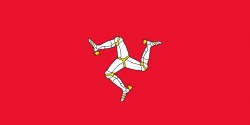Isle of Man (Earth)
 |
 |
Humans have lived on the island since before 6500 BC. Gaelic cultural influence began in the 5th century AD, when Irish missionaries following the teaching of St. Patrick began settling the island, and the Manx language, a branch of the Goidelic languages, emerged. In 627, King Edwin of Northumbria conquered the Isle of Man along with most of Mercia. In the 9th century, Norsemen established the thalassocratic Kingdom of the Isles, which included the Isle of Man. Magnus III, King of Norway from 1093 to 1103, reigned as King of Mann and the Isles between 1099 and 1103.
In 1266, King Magnus VI of Norway sold his suzerainty over Mann to King Alexander III of Scotland under the Treaty of Perth. After a period of alternating rule by the Kings of Scotland and England, the island came under the feudal lordship of the English Crown in 1399. The lordship revested in the British Crown in 1765, but the island did not become part of the 18th-century Kingdom of Great Britain, nor of its successors, the United Kingdom of Great Britain and Ireland and the present-day United Kingdom of Great Britain and Northern Ireland. It has always retained its internal self-government. In 1881, the Isle of Man Parliament, Tynwald, became the first national legislative body in the world to give women the right to vote in a general election, although this excluded married women.
The Manx economy is bolstered by its status as a tax haven and offshore banking destination. Insurance and online gambling each generate 17% of the GNP, followed by information and communications technology and banking with 9% each. This status has also brought the problems of money laundering, financial crime, and terrorism financing.
Internationally, the Isle of Man is known for the TT Motorcycle Races, and the Manx cat, a breed with short or no tails. In 2016, UNESCO awarded the Isle of Man biosphere reserve status.
The Manx name of the Isle of Man is Ellan Vannin: ellan, a Manx word meaning "island"; Mannin appears in the genitive case as Vannin , with initial consonant mutation, hence Ellan Vannin, "Island of Mann". The short form used in English is spelled either Mann or Man. The earliest recorded Manx form of the name is Manu or Mana.
The Old Irish form of the name is Manau or Mano. Old Welsh records named it as Manaw, also reflected in Manaw Gododdin, the name for an ancient district in north Britain along the lower Firth of Forth. In the 1st century AD, Pliny the Elder records it as Monapia or Monabia, and Ptolemy (2nd century) as Monœda (Mοναοιδα, Monaoida) or Mοναρινα (Monarina), in Koine Greek. Later Latin references have Mevania or Mænavia (Orosius, 416), and Eubonia or Eumonia by Irish writers. It is found in the Sagas of Icelanders as Mön.
The name is probably cognate with the Welsh name of the island of Anglesey, Ynys Môn, usually derived from a Celtic word for 'mountain' (reflected in Welsh mynydd, Breton menez, and Scottish Gaelic monadh), from a Proto-Celtic *moniyos.
The name was at least secondarily associated with that of Manannán mac Lir in Irish mythology (corresponding to Welsh Manawydan fab Llŷr). In the earliest Irish mythological texts, Manannán is a king of the otherworld, but the 9th-century Sanas Cormaic identifies a euhemerised Manannán as "a famous merchant who resided in, and gave name to, the Isle of Man". Later, a Manannán is recorded as the first king of Mann in a Manx poem (dated 1504).
Map - Isle of Man (Earth)
Map
Country - Isle_of_Man
 |
 |
Humans have lived on the island since before 6500 BC. Gaelic cultural influence began in the 5th century AD, when Irish missionaries following the teaching of St. Patrick began settling the island, and the Manx language, a branch of the Goidelic languages, emerged. In 627, King Edwin of Northumbria conquered the Isle of Man along with most of Mercia. In the 9th century, Norsemen established the thalassocratic Kingdom of the Isles, which included the Isle of Man. Magnus III, King of Norway from 1093 to 1103, reigned as King of Mann and the Isles between 1099 and 1103.
Currency / Language
| ISO | Currency | Symbol | Significant figures |
|---|---|---|---|
| GBP | Pound sterling | £ | 2 |
| ISO | Language |
|---|---|
| EN | English language |
| GV | Manx language |















